#creating inclusive digital experiences
Explore tagged Tumblr posts
Text

Accessible Web Design
Accessible web design ensures equal access and usability for all users, regardless of their abilities, promoting inclusivity and a seamless online experience!
#https://adasitecompliance.com/designing-inclusivity-best-practices-accessible-web-design/#designing inclusivity#best practices for accessible web design#accessible web design#inclusive website design#web accessibility guidelines#ADA compliance for websites#creating inclusive digital experiences#accessibility in web design#user-friendly web design#universal design principles#inclusive design techniques#web accessibility standards#WCAG guidelines#user experience and accessibility#inclusivity in website development#ada website compliance#ada compliance services#ada website accessibility#ada compliant websites#website accessibility compliance#ada compliance audits#ada compliance solutions#accessibility for disabled#ada web accessibility#website accessibility services#ada compliance guidelines#ada compliance checklist#ada accessibility guidelines#ada compliance consulting
0 notes
Text
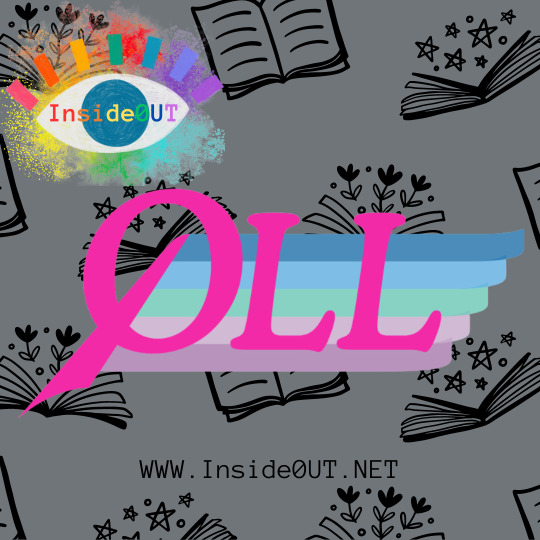
The Queer Liberation Library (QLL) is a digital treasure trove of over 1,200 LGBTQ books, providing a valuable resource for individuals across the country to access. This unique collection offers a diverse range of literature that celebrates and explores the LGBTQ experience in all its complexity. QLL has attracted over 50,000 readers, providing safe access to queer literature regardless of location or circumstances. Unlike traditional libraries, the Queer Liberation Library is specifically curated to center LGBTQ voices and experiences. With a focus on inclusion and representation, this digital catalog offers a wide range of genres, from fiction and poetry to memoirs and academic texts. While the collection is extensive, here are a few notable titles: "A Burst of Light" by Audre Lorde “One Last Stop” by Casey McQuiston: A contemporary novel with LGBTQ themes. QLL continually adds new titles to enrich its catalog and cater to diverse interests QLL was founded by a team of nine volunteers in response to state laws and school policies challenging books with LGBTQ themes. By providing access to a wealth of LGBTQ literature, the Queer Liberation Library offers readers the opportunity to explore diverse perspectives, gain insight into different lived experiences, and foster a greater understanding of the LGBTQ community. It offers free digital access to over 1,200 LGBTQ books for readers across the United States. Whether you are looking for resources for research, personal enrichment, or simply to broaden your literary horizons, this digital library has something to offer everyone. Representation matters, and the Queer Liberation Library plays a crucial role in amplifying LGBTQ voices and stories. Unlike many public libraries, QLL specifically curates books with queer themes or written by queer authors. By providing a platform for LGBTQ authors and their work, this digital catalog helps to create a more inclusive literary landscape and promotes greater visibility for the LGBTQ community. With over 1,200 books to explore, the Queer Liberation Library is a valuable resource for anyone seeking to learn more about LGBTQ history, culture, and identity. Whether you are a member of the LGBTQ community or an ally looking to educate yourself, this digital library is a rich source of knowledge and inspiration. 🌈 📚 Check it out HERE: www.queerliberationlibrary.org
@queerliblib
#lgbtq community#lgbtq#self love#lgbtq positivity#lgbt pride#queer pride#queer community#lesibian#lesbian pride#gay pride#bookblr#books#booklr#indie books#reading#books and reading#bookworm
2K notes
·
View notes
Text
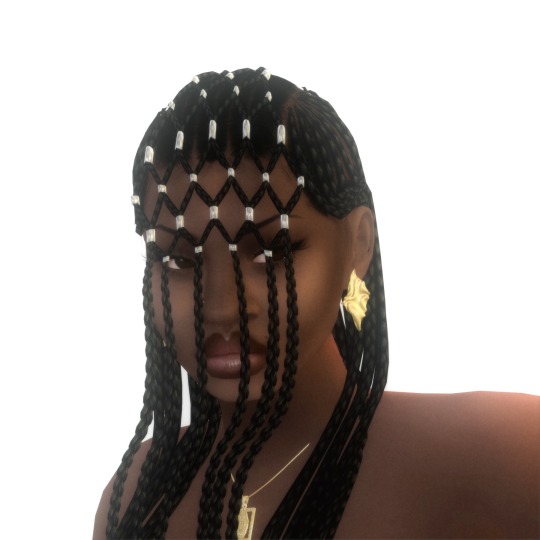
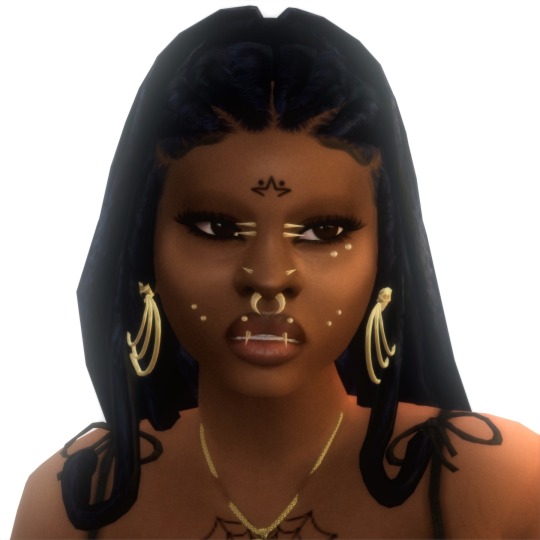

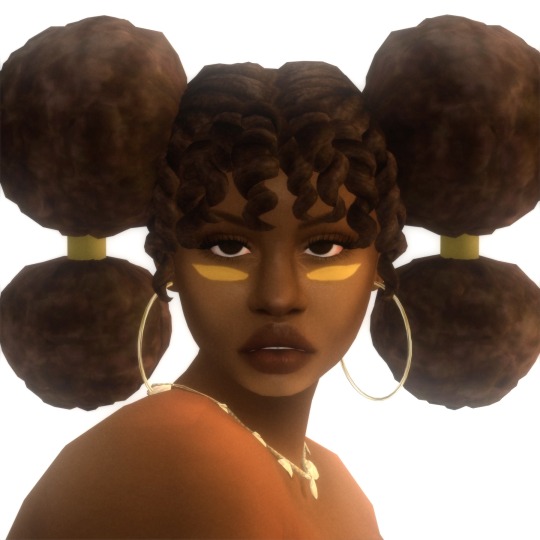
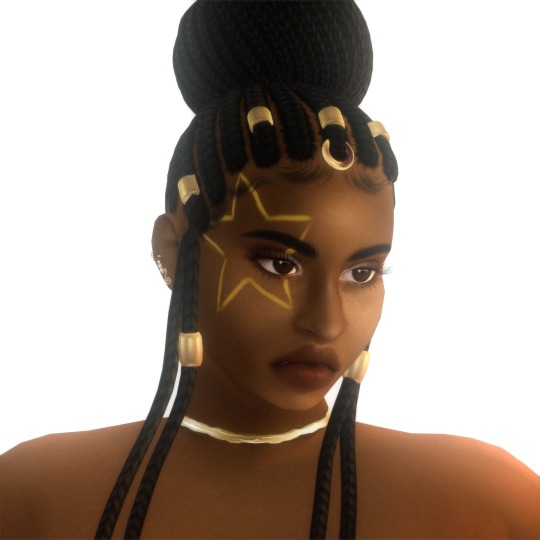
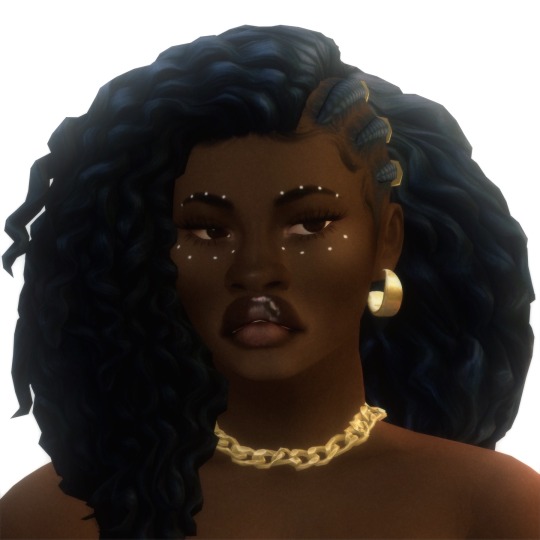
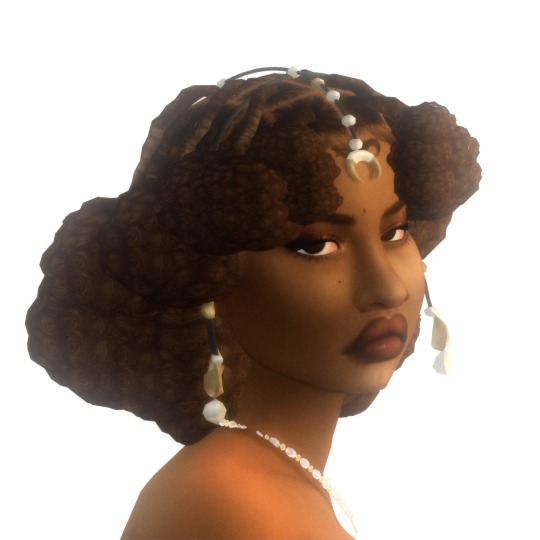

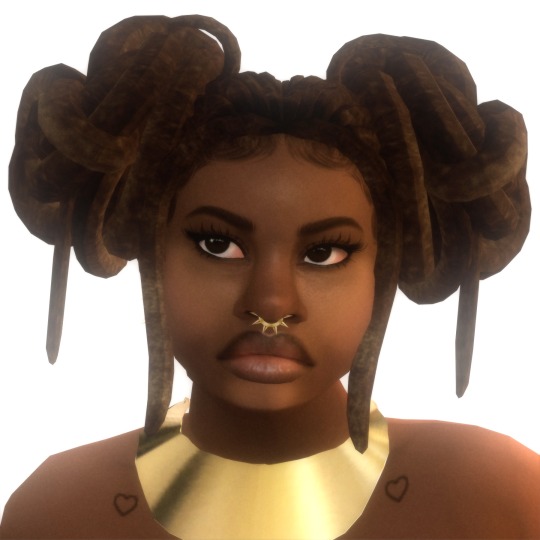
afrofuturism🪐
☆ one ~ solange hair by darknightt (tsr warning) ☆ two ~ loretta hair by @simtric ☆ three ~ bahati braids by @sheabuttyr ☆ four ~ isonoe hair by octetsica ☆ five ~ binah braids by @sheabuttyr ☆ six ~ cornrows & curls hair by @leeleesims1 ☆ seven ~ indie hair by @sashima ☆ eight ~ loc petals by @shespeakssimlish ☆ nine ~ mnemosyne hair by octetsica ☆
mini dedication essay to black simmers and ts4 creators below! pls read if you have the chance! <3
this edit is a small homage to afrofuturism and the various unique black hairstyles (and especially the black creators of most of these hairs) that i have downloaded and admired over the years! some of these are old and some of these are new.
to me, afrofuturism means constantly honoring/reclaiming/challenging the past while constantly creating/dreaming of a better society/world/future. a society/world/future that embraces and empowers all of our differences, ingenuity, aspirations, and unique lived/cultural experiences. a society/world/future that does not limit us through the various systems of marginalization and oppression (racism, homophobia, transphobia, fatphobia, sexism, xenophobia, ableism, classism, colorism, etc.) that often affects how we, as black people, live today.
blackness is so diverse and intricate yet it's always been a struggle to find my culture within a game that's known for being so limiting, bland, and extremely eurocentric when it comes to hairstyles, clothing, food traditions/events, etc. black simmers have always had to figure out how to make this game more inclusive and make it resemble either more like how our ancestors lived, how our current lives are, or how we would want our lives (and even our children's lives) to look like in the future no matter how dystopian the real world look and feel now. fortunately, these hairs and their uniqueness bring a huge sense of culture and style to this game. they have always inspired me and made me feel extremely proud to a part of the lovely african diaspora (and the ever-growing black simmer community).
in a way, being a black simmer and cc creator usually means that we are often digitally creating our own worlds as afrofuturists to varying degrees (whether we know it or not) every time we open our game, make our sims, make houses, and/or make black cultural cc. also, now i know that cc making is not easy to do and is extremely time-consuming so this post is also just me giving all black cc creators especially those who create for free their well-deserved flowers! here are some other black cc creators who created cc that have greatly impacted my game since i first started playing sims 4: @/leeleesims1 @/simtric @/hi-land @/yuyulie @/sims4bradshaw @/ebonixsims @/xmiramira @/sheabuttyr @/qwertysims @/oplerims @/sleepingsims @/shespeakssimlish and so many more im forgetting probably (im too shy rn to tag ppl but i greatly appreciate y’all fr i hope y’all telepathically get this message somehow 😭).
last but not least, i am hoping that this inspires somebody to keep creating or start creating regardless of what they think their skill level is! somebody will absolutely fall in love with your work and/or your art/work will 100% change someone's game forever <333
#ts4#sims 4#the sims 4#black simblr#black simmer#ts4 edit#🪐#🪐 black hair#soleil jones#xolani souza de oliveira#angela evans#leona morrison#chantelle diang#ayesha solomon#nylah rivers#nykhor chantelle diang#dove adeyemi#something to end black history month with!#i really hope my essay make sense 😭😭😭#i planned to this last year but hated the pictures i took so i scraped it and redid it#i couldn’t thank enough to all the black cc creators before me and hope to help/inspire new black cc creators 🙏🏾#this is also kinda the updated version of my for the culture post…i made sure to include some familiar (but updated) faces 😭☝🏾💗🙈
2K notes
·
View notes
Text
SAG-AFTRA deal on AI is looking terrible, actually 😬
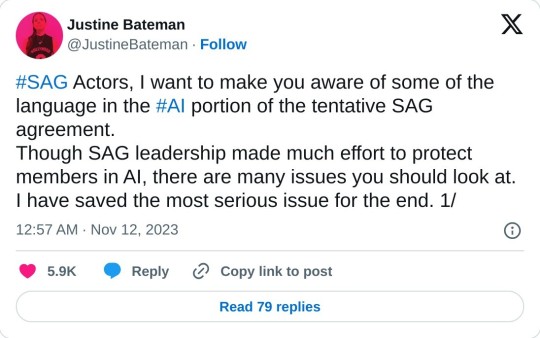
#SAG Actors, I want to make you aware of some of the language in the #AI portion of the tentative SAG agreement.
Though SAG leadership made much effort to protect members in AI, there are many issues you should look at. I have saved the most serious issue for the end. 1/
If a “digital double” is made of you during a film, they must get your consent and inform you of their intentions for its use, EXCEPT "when the photography or sound track remains substantially as scripted, performed and/or recorded.”2/
This is going to be left up to the studios/streamers’ interpretation. And so, any subtlety regarding how you chose to look or move for the character during the shoot could potentially be changed. Your hair, your clothes, your make-up, etc. 3/
Also, your physical placement in a scene can be changed, like your nearness or distance from another character, or even moving you from the front seat of a car "to the back seat of the car." This suggests not much agency on your part to control your character or performance. 4/
Under “(Digital Double) Use Other Than in the Motion Picture for Which the Performer Was Employed,” it says that "No additional compensation shall be required for use of an Employment-Based Digital Replica that was created in connection with employment of a performer who was… 5/
… employed under Schedule F.” It appears that if you were paid Schedule F for the first film, you don’t get paid for the sequels, where they’re just using your digital double instead of you. I suggest members get sharp clarity on this. 6/
If a “digital double” was made of you in a separate manner (on another film or privately made by you), it's referred to as an “independently created digital replica” (ICDR). There is no minimum compensation listed for studios/streamers to use an ICDR of you in… 7/
… any film they want; only consent. You will apparently need to negotiate any compensation on your own. 8/
Neither consent nor compensation is necessary to use your “digital double” if the project is "comment, criticism, scholarship, satire or parody, a docudrama, or historical or biographical work.” So, you could find yourself in a project you never consented to… 9/
…doing things you never were informed of, for no compensation at all. This is the “First Amendment” argument the #GAI tech companies are fond of trotting out. 10/
Another consent exemption is granted to "adjusting lip and/or other facial or body movement and/or the voice of the performer to a foreign language, or for purposes of changes to dialogue or photography necessary for license or sale to a particular market. 11/
The substitution of swear words is not new, but that your “body movements” would be changed suggests you’ll be used like a type of rag doll in post-production. 12/
There are still a few concerns with the Background Performers’ details, but there’s one that stands out as especially sad. "If the Producer uses a background actor’s Background Actor Digital Replica in the role of a principal performer, the background actor shall be paid… 13/
…the minimum rate for a performer… had (they) performed those scene(s) in person.” So, if an extra is “bumped up” to a principal cast member, they never get to experience that position on a set. But you get a check after the fact. 14/
And the most serious issue of them all is the inclusion in the agreement of “Synthetic Performers,” or “AI Objects,” resembling humans. This gives the studios/streamers a green-light to use human-looking AI Objects instead of hiring a human actor. 15/
It’s one thing to use GAI to make a King Kong or a flying serpent (though this displaces many VFX/CGI artists), it is another thing to have an AI Object play a human character instead of a real actor. To me, this inclusion is an anathema to a union contract at all. 16/
This is akin to SAG giving a thumbs-up for studios/streamers using non-union actors. This would be like the @Teamsters putting in their contract that it’s A-OK for the employer to utilize self-driving trucks instead of them. 17/
@Teamsters I find it baffling that a union representing human actors would give approval of those same actors being replaced by an AI Object. And don’t forget, those AI Objects are a mash-up of all actors' past performances, adding insult to injury. 18/
@Teamsters Bottomline, we are in for a very unpleasant era for actors and crew. The use of “digital doubles” alone will reduce the number of available jobs, because bigger name actors will have the opportunity to double or triple-book themselves on multiple projects at once. 19/
@Teamsters The use of these “digital doubles” will most likely preclude the need of a set or the use of many @IATSE crew and @Teamster drivers. 20/
@Teamsters @IATSE @Teamster Audition odds will change. Winning an audition could become very difficult, because you will not just be competing with the available actors who are your type, but you will now compete with every actor, dead or alive, who has made their “digital double” available for rent … 21/
@Teamsters @IATSE @Teamster … in a range of ages to suit the character. You also will be in competition with an infinite number of AI Objects that the studios/streamers can freely use. And a whole cast of AI Objects instead of human actors eliminates the need for a set or any crew at all. 22/
@Teamsters @IATSE @Teamster You are a complex & remarkable human. Don’t let the CEOs convince you otherwise. Seek out filmmakers & showrunners who value your basic worth & committed to human workers on their projects. These are the ones who will make work that matters. We’re going to be OK. Just hold on. /
#sag aftra#sag aftra strike#ai#sag aftra deal#sag aftra contract#text#post#justin bateman#wtf yall. board too eager to say yes i was wondering why their vote was 86%#who voted against
538 notes
·
View notes
Text
Keep It Eclectic

Eclecticism in witchcraft and magick refers to the practice of drawing from multiple traditions, spiritual paths, and systems of belief to create a personalized practice. In modern witchcraft, eclecticism plays a crucial role in making the craft more inclusive, adaptable, and meaningful to practitioners. Below are some of the key reasons why eclecticism is important in contemporary magickal practices.
Personalization and Authenticity
Modern witches often find that no single tradition fully resonates with their experiences, beliefs, or needs. Eclecticism allows individuals to:
• Craft a practice that aligns with their personal spirituality.
• Blend different traditions in a way that feels authentic and meaningful.
• Avoid dogma and rigid structures that may not fit their worldview.
For example, a practitioner may feel drawn to the herbal wisdom of traditional European witchcraft, the protective symbols of Hoodoo, and the lunar cycles of Wicca, forming a practice that uniquely reflects their path.

Accessibility and Inclusivity
Historically, many magickal traditions were closed to outsiders, limited to specific cultures, or hidden due to persecution. Today, eclectic witchcraft makes spirituality and magick more accessible by:
• Welcoming people from diverse backgrounds who may not have a direct lineage in a particular tradition.
• Allowing solitary practitioners to develop their own methods rather than requiring formal initiation.
• Encouraging respect for different cultural practices without enforcing exclusivity.
This inclusivity is especially important for witches who may not feel connected to a single cultural or religious identity but still seek a meaningful spiritual path.
Adaptability to Modern Life
Traditional magical systems were often developed in specific cultural and historical contexts. While valuable, some of their original practices may not be practical for modern practitioners. Eclecticism allows witches to:
• Integrate new knowledge, science, and technology into their practice.
• Modify rituals and spells to suit contemporary lifestyles.
• Use materials and correspondences that are more easily accessible today.
For example, a city-dwelling witch who lacks access to wild herbs might use store-bought alternatives, clever placement of sigils, or even technomancy (cyber magick) as part of their eclectic practice.

Encouraging Growth and Exploration
Eclecticism promotes a mindset of continuous learning and exploration, allowing practitioners to:
• Study multiple traditions and expand their magickal knowledge.
• Experiment with different techniques to see what works best for them.
• Develop their intuition by working with various magickal systems.
Rather than adhering to rigid rules, eclectic witches remain open to new ideas, evolving their practices over time.
Bridging the Past and the Future
Eclectic witchcraft preserves the wisdom of ancient traditions while allowing room for new interpretations. This balance ensures that witchcraft remains a living, evolving practice rather than a stagnant relic of the past.
For example, many modern witches:
• Honor ancestral traditions while adapting them to modern ethical standards.
• Combine traditional spellcraft with modern psychology and self-help techniques.
• Use contemporary tools like apps, digital grimoires, or online covens alongside traditional rituals.

Eclecticism and Cultural Sensitivity
While eclecticism encourages borrowing from different traditions, it is also important to practice cultural sensitivity and respect. Responsible eclecticism involves:
• Understanding the origins and significance of the practices one adopts.
• Avoiding cultural appropriation by acknowledging closed traditions that require initiation or ancestral lineage.
• Giving credit to cultures and sources rather than claiming practices as one’s own.
A balanced eclectic practice respects both the freedom to explore and the responsibility to honor traditions appropriately.
Strengthening Individual Empowerment
Ultimately, witchcraft is about personal empowerment. Eclecticism allows practitioners to reclaim their spiritual authority by:
• Trusting their intuition rather than relying on external religious hierarchies.
• Creating a practice that is deeply personal and uniquely effective.
• Feeling free to evolve and change as they gain new insights.
This empowerment is one of the core reasons why eclectic witchcraft has become so popular in modern times.
Eclecticism is essential to modern witchcraft because it fosters inclusivity, adaptability, and personal empowerment. By blending elements from different traditions in a thoughtful and respectful way, practitioners can create a practice that is both meaningful and effective. Instead of being confined to one path, eclectic witches embrace the idea that spirituality is fluid, ever-changing, and deeply personal.

#eclectic witch#eclectic#eclectic pagan#witch#magick#witchcraft#witchblr#witch community#diversity#mixed bag#spellwork#spellcasting#spells#spell#casting#witches#important#knowledge#esoteric#occult#interesting#spiritual journey#folk magick#chaos magick#chaos#chaos witch#eclectic wicca#lefthandpath#dark#satanic witch
54 notes
·
View notes
Text
When she was five years old, Kitty Saks’ home in Vienna was commandeered by the Nazis, leading her family to flee to Brussels, where she was hidden in a convent until the Allies liberated Belgium. Twenty-seven members of her family were killed in the Holocaust.
Until a few weeks ago, that story could be read on the website of a U.S. Air Force unit, one of the many ways the government commemorated the Holocaust.
But now it is gone, one of many Holocaust remembrance articles taken down as part of the Defense Secretary Pete Hegseth’s effort to rid Pentagon platforms of anything related to DEI.
In a February 26 memo titled “digital content refresh”, Pentagon leadership was directed to “remove all DoD news and feature articles, photos, and videos that promote Diversity, Equity, and Inclusion (DEI).” More than 24,000 articles could potentially be removed, according to a database obtained by CNN.
Also caught in the net of the anti-DEI purge are articles focused on race, gender and LGBTQ experiences, as well as others on topics such as cancer awareness, suicide prevention and sexual assault. An article on Jackie Robinson, who served in the military and is widely admired for breaking baseball’s color line, was removed and has been reinstated.
Also removed was an article on Bea Arthur, the Jewish “Golden Girls” star who served in the Marines during World War II.
Beyond Saks’ story, at least two more pages documenting Holocaust remembrance were also removed. One page, titled “A Cadet’s Perspective: Holocaust Days of Remembrance,” described a cadet’s experience visiting concentration camps a decade ago and the ways they informed his experience in the U.S. Air Force Academy.
Another page stripped from the Pentagon’s platforms commemorated Holocaust Remembrance Week and told readers to not forget the importance of religious diversity:
“The first place we must look is within ourselves. Do we allow stereotypes to determine how we think of another based on their religion? Do we diminish another’s beliefs because they are different from our own? It is in examining ourselves and the inner thoughts that we allow to foster, we will be able to create change,” the article read.
In a statement, Pentagon Press Secretary John Ullyot — who referred to DEI initiatives as “Woke cultural Marxism” — said pages that had inadvertently been removed would be reinstated but did not detail if or when the Holocaust-related articles would go back up.
“We are pleased by the rapid compliance across the Department with the directive removing DEI content from all platforms,” his statement said. “In the rare cases that content is removed — either deliberately or by mistake — that is out of the clearly outlined scope of the directive, we instruct the components and they correct the content so it recognizes our heroes for their dedicated service alongside their fellow Americans, period.”
Saks died in 2021 at the age of 88. In the article about her experience, which can still be viewed on the Internet Archive’s Wayback Machine, she was quoted saying, “I think the Holocaust should never be forgotten and it should be taught in schools, but not just a few lines.”
34 notes
·
View notes
Text
ALTER-TOBER
Me and ZigZagWolf on deviantart made Alter-tober (like ink-tober but alterhumen/alterbeing themed)
'Type stands for kintype, kithtype, theriotype, etc
1. Draw your 'type(s)
2. Draw how you see humanity though an alterhumen/alterbeing lense
3 Draw how you wish you looked (humanish/possible)
4. Draw how you wished you looked (further from human)
5. draw yourself with gear
6. Draw what you though you were before figuring out your real 'type(s)
7. draw your friends 'type(s)
8. design a mask (digitally or actually making it)
9. Draw yourself doing something your 'type does
10. Draw yourself with your 'type
11. draw the place/biome/whatever your 'type lives.
12 Draw something related to why your a alterhuman belifs or origin (like a memory, soul, copying an animal etc)
13. Draw something you hate about being alterhuman
14. Draw something you love about being alterhuman
15. Draw the moment you realized you were alterhuman
16. Draw a way you connect to your 'type(s)
17 .Depict a non-human feature you wish you had unrelated to your 'type(s)
18. Depict how different cultures represent your 'type(s) (art, stories, folklore).
19. Depict what triggers a shift (e.g., full moon, emotions, nature).
20. Create a symbol, crest, or sigil that represents your alterhuman self.
21. Design tattoo based off your 'type's (ex a marking your type usually has or just a tattoo of your 'type)
22. Draw your 'type as a plushie
23. Draw inspired by a song that makes you think of your alterhuman/alterbeing experience
24. Draw your 'type's relationship with another species
25. Draw a food you relate to your 'type
26. Draw an item your relate to your 'type
27. Draw an species related to your type (ex if your a lion draw an another feline or something)
28. if your type is domestic draw a wild ver of your type and vis versa/if your humeniod draw a more animalistic ver of your type
29. if you have mutiple 'types draw them combined if not draw your 'type combined with a species you like
30. draw your type as abstract art
31 Free day!!!
--------------------------------------------------
Sorry if it's not inclusive btw I tried to make it as inclusive as possible but objectkin, conceptkin, polymorph, etc might not be able to use this :( Also tag me if you do any of the prompts!!!

23 notes
·
View notes
Text
Convention
The "True Otaku" documentary series offers an in-depth exploration of the anime fandom, delving into the lives, passions, and societal perceptions of individuals deeply immersed in anime culture. By examining the content and themes presented in these videos, we can gain a comprehensive understanding of the significance of the anime fandom and its impact on both individuals and society.
Understanding the Otaku Phenomenon
The term "otaku" originates from Japan and refers to individuals with an intense passion for anime, manga, and related subcultures. While in Japan the term can carry a somewhat negative connotation, implying social withdrawal or obsessive interests, internationally, "otaku" has been embraced more positively, symbolizing a deep appreciation for Japanese pop culture.
The documentary series sheds light on the daily lives of otaku, showcasing their dedication to collecting merchandise, attending conventions, and engaging in cosplay. These activities are not merely hobbies but are integral to their identity and social interactions. For many, the anime community provides a sense of belonging and an avenue to connect with like-minded individuals who share similar interests and values.
The Social Dynamics of Anime Fandom
Anime fandom is characterized by its vibrant community and the strong bonds formed among its members. Conventions and online forums serve as hubs for fans to discuss their favorite series, share fan art, and collaborate on projects. This communal aspect fosters creativity and allows fans to express themselves in unique ways.
However, the documentary also highlights the challenges faced by otaku, particularly concerning societal perceptions. In some cultures, intense involvement in anime fandom can be misunderstood or stigmatized, leading to stereotypes of otaku as socially inept or overly obsessed. These misconceptions can result in social isolation or discrimination. Despite this, many otaku embrace their identity with pride, challenging societal norms and advocating for a broader acceptance of diverse interests.
Cultural Impact and Global Reach
The global spread of anime has led to the formation of diverse fandoms worldwide, each adapting the culture to their local contexts. The documentary illustrates how anime has transcended cultural boundaries, influencing various aspects of art, fashion, and entertainment globally. This cross-cultural exchange has enriched the anime community, introducing a variety of perspectives and interpretations that enhance the overall experience.
Moreover, the rise of digital platforms has facilitated greater accessibility to anime content, allowing fans from different regions to connect and share their passion. This interconnectedness has fostered a more inclusive and expansive community, where fans can celebrate their love for anime without geographical constraints.
Personal Growth and Identity Formation
Engagement in anime fandom often plays a significant role in personal development. For many individuals, anime narratives resonate deeply, offering insights into complex themes such as friendship, perseverance, and self-discovery. These stories can provide comfort and guidance, especially during formative years, helping fans navigate their own life challenges.
Additionally, participation in fandom activities like cosplay or fan fiction writing allows individuals to explore different facets of their personality and express themselves creatively. This exploration can lead to increased self-confidence and a stronger sense of identity.
Conclusion
The "True Otaku" documentary series offers a comprehensive look into the multifaceted world of anime fandom. It highlights the passion and dedication of otaku, the communal bonds formed within the fandom, and the cultural impact of anime on a global scale. Despite facing societal challenges, the anime community continues to thrive, providing a space for individuals to connect, create, and grow. The significance of this fandom lies not only in its entertainment value but also in its ability to foster meaningful relationships and personal development among its members.

9 notes
·
View notes
Text






Hey everyone,
I need to address something troubling that's been happening recently. There's been a rise in disgusting, mean-spirited comments online targeting Hinata and her fans, specifically coming from a girl named Gabby Erdman. This kind of behavior isn’t just rude—it’s outright cyberbullying. Using public platforms to spread hate and disrespect is unacceptable and harmful.
Hinata and her fans deserve to engage with the community positively, just like everyone else. No one should have to face this kind of abuse. We need to call out these harmful actions and support each other against such negativity. Let's work together to create a kinder, more respectful online space. 🌟
#StopCyberbullying #SupportHinata #KindnessMatters
I want to address a concerning issue that’s been popping up more frequently: the misuse of character hatred as a form of cyberbullying. It’s crucial to recognize that disliking a fictional character should never justify attacking, threatening, or bullying others.
When people let their negative feelings towards a character turn into harassment against fans, creators, or anyone associated, it crosses the line from healthy critique to harmful cyberbullying. This behavior is not only hurtful but can also escalate into serious threats, which is unacceptable.
We need to remember that it’s perfectly fine to dislike a character or disagree with a storyline. However, using that disdain as an excuse to harass or threaten others is not justifiable and should not be tolerated. Let’s focus on fostering respectful discussions and addressing differences without resorting to personal attacks or intimidation.
Together, we can create a safer, more supportive community where everyone can express their opinions without fear of being bullied. Let’s work towards constructive conversations and kindness in all our interactions. 🌟
Cyberbullying is more than just hurtful comments and online harassment—it can lead to significant issues like inequality and bad behavior. When people are targeted online, it not only affects their mental health but can also perpetuate a culture of fear and division.
The impact of cyberbullying extends beyond the individual. It reinforces harmful stereotypes, creates hostile environments, and can lead to systemic inequality by discouraging diverse voices and perspectives. Additionally, when people see or experience cyberbullying, it can normalize bad behavior and contribute to a cycle of negativity and intolerance.
We must address cyberbullying not just as a personal issue, but as a societal problem that affects how we interact and respect each other. Promoting empathy, support, and respectful dialogue online is crucial in combating these issues and fostering a more inclusive and positive digital space.
Let’s work together to create an environment where everyone feels safe and valued, and where we stand up against inequality and harmful behavior. 🌟
CyberbullyingAwareness #RespectInFandom #HealthyDebate

#naruto#no more hating#hinata#no more anti hinata#bullying is bad#naruhina#naruto shippunde#anime#sakura#fans#fandom#trending#bullying#haters#sasuke#stop haters#manga#end bullying#can destroy you#horrible#she is busted#sasuhina#hanabi hyuga#anti hinata must be end#this is make worst#boruto#himawari#naruto shippuden#mean girl
21 notes
·
View notes
Text
The Digital Circus Server Info
Step right up, folks! The show is about to begin over at The Digital Circus server. ♡ . ݁₊ ⊹ .𖥔 ݁
This unofficial server is dedicated to the 2023 indie animated series The Amazing Digital Circus, created by Gooseworx in collaboration with Glitch Productions.
Give in your ticket at the admissions booth and find a seat in the crowd. Your ringmasters, Box and Lagri, will start the show shortly! In the circus tent, you’ll find:
☆ ➳ A bustling community who are as equally as interested with The Amazing Digital Circus as you are!
★ ➳ An inclusive and accessible safe-space!
☆ ➳ A place to meet fellow content creators (artists, writers, cosplayers, etc.) and share your own work too!
★ ➳ Share your TADC fan-work in any of our designated channels!
☆ ➳ Attentive staff that are ready to ensure a friendly and safe experience!
Oh, the lights are dimming as we begin introducing our main act! We hope you join us down at The Digital Circus server. Don’t forget to grab some snacks too! ♡ . ݁₊ ⊹ .𖥔 ݁
Click on this nifty little link to join today! P.S. The little fellow in the video below and the blog icon is none other than Crackle (he/him), the unofficial, official server mascot. He was originally conceptualized by Boxxyei, one of the server owners. They also drew the blog banner. If you are interested in seeing more of their work, give them a follow here!
Follow us on our other socials too!
Twitter.
#the amazing digital circus#tadc#glitch productions#pomni#gooseworx#tadc jax#tadc ragatha#tadc fanart#tadc pomni#murder drones#hazbin hotel#helluva boss#tadc kinger#tadc zooble#tadc gangle#tadc bubble#tadc kaufmo#caine#tadc caine#the amazing digital circus caine#thedigitalcircusserver
33 notes
·
View notes
Text
Universal Design

Designing for Inclusivity: Best Practices for Accessible Web Design
The internet has become such an integral part of most people’s lives. It is the go-to resource for recipes, shopping, jobs, homes, travel, or maintaining contact with loved ones. However, did you ever realize that not everyone has equal online experiences? Yes, there are now at least one billion people across the world experiencing some form of inability. And in their case, connectivity and website access are not as easy as they should be.
And it is why creating accessible websites would be a priority for any business with an online presence. It is not only morally right, but increased web accessibility means increased traffic and more business. Besides, an accessibility design will not affect your product’s UX or UI if performed by professionals like us at ADA Site Compliance. We have a team of accessibility experts ready to handle all your website’s compliance needs.
What is an inclusive web design?
Inclusive and accessible web design goes hand in hand. While an all-inclusive design process ensures no group of people’s needs or concerns are overlooked, maintaining accessibility strategies helps keep this in mind. However, what’s most important while designing an inclusive design is remembering that not every user accesses or interacts with the website similarly. An inclusive design helps remove bias and assumptions from your website so that no user feels excluded.
How to create an inclusive web design persona
Web designers often come up with a persona while designing their projects. It helps them understand how the user will engage with the site. Similarly, there is a persona to follow while designing an inclusive web design which is broken down into:
Name
Goals
Motivations
Demographics
Personality
Fears
Frustrations
It also includes the persona:
Ability where you assess how some users will be physically and cognitively restricted on using and engaging with the website.
Aptitude, as some users may not be digitally literate. In this case, deviating from basic layouts and not providing sufficient context will not help.
Attitude as some users may perceive a website to be unsafe because of privacy issues or the risk of encountering malware. You can address these fears through recognized and trusted safety and privacy features.
Some users may not have internet connectivity at home but have alternatives. They can head to the cafe or library, where connectivity, location, hardware, and software can impact access.
Localization as it is unsafe to assume that every user lives in the same country or comes from the same culture, or speaks your language. Address these differences in your inclusive user persona.
16 ways to make your website more accessible and inclusive
The following tips will go a long way in helping ensure your website is more accessible and inclusive:
1. Proper content structure
It does not matter how great your website content is if your prospects cannot read them. And this is very likely to happen because 253 million people worldwide suffer from some form of visual disability. You thus risk missing out on connecting with them. There are various steps to make your content easy to read for users with visual, language, and cognitive disabilities. You can break up the content into smaller sections with headers and subheaders, properly contrast the background and content, and avoid using decorative font.
2. Use the right text size and fonts
A practically microscopic or curly font can be difficult for anyone to decipher. These fonts should be avoided, and only the appropriate ones in an inclusive design process. The right text size and font size enhance your site’s overall aesthetics and make it accessible to a broader audience. It is safe to use a font like Verdana that is clean, easy to read, and of at least 12pt.
3. Proper language and tone of voice
The website’s tone of voice and language is essential for an accessible and inclusive website. Sites with words like ‘wheelchair-bound’ negatively impact people with disabilities. ‘Wheelchair user’ is a better option. Similar websites with complex vocabulary and syntax make it difficult for those with learning disabilities and visual impairments to understand your web content.
4. Proper content mark-up
In addition to proper content structure, you must use the correct HTML markup to denote things like a button on a page. Also, use heading tags like H1, H2, etc., through the content to create a visual hierarchy in the front end and a proper code structure in the backend. It also gives context to HTML elements that screen readers and the visually impaired use while browsing.
5. Keyboard navigation
Keyboard accessibility is sufficient in an inclusive design. The visually impaired and those with visual disabilities or with motor disabilities may depend on keyboards to navigate websites. In this case, they use the tab key to select interactive elements on a webpage.
6. Useable focus states
The blue outline you occasionally see around links or buttons is called the focus state. They help people use keyboards to navigate websites by highlighting the selected page elements.
7. Images with alt text
Incorporating alt text into images makes your site more accessible. Alt text is a short text describing the image which screen readers read, making it easier for the visually impaired to understand the image information. The alt text should provide a clear and relevant image description or be too long. Screen readers find reading overly complicated and repetitive descriptions challenging. Conversely, purely decorative images are marked using an empty <alt> attribute to tell screen readers to skip the image.
8. Form fields with descriptive labels
Your marketing and sales depend on forms, so ensure they are accessible by using descriptive labels in form fields. It is better than using placeholder text as labels, as they typically disappear once you start filling out the form. This is difficult for the visually impaired to read and to remember what the field was for. You can also ensure users know what to do while filling out forms by using small helper text above the form field.
9. Simple copywriting
Keeping your copy and content clear, plain, and simple without unnecessary jargon helps you reach a larger audience. If you use acronyms or anything technical, provide a glossary of terms or a plain English alternative. It also helps to use the expanded version of the acronym for the first use and use more lists.
10. Proper color contrast
Many tend to overlook a website’s color contrast. While most are not affected by text blocks on differently colored backgrounds, reading the text can be a nightmare for those with vision impairments. The World Wide Web Consortium (W3C) stipulates that the typical color contrast ratio between text and background be at least 4.5:1. This ensures even those with limited color vision easily read the text. Also, ensure the colors of buttons, links, and other interactive elements stand out from the rest of the content.
11. Know your target audience
Conduct thorough research about your target audience for a deeper understanding of your audience and to design a more inclusive design. You can use your CRM and audience surveys and study website behavior trends to learn more about your target audience.
12. Proper representation
Audience research helps you understand your customers’ backgrounds, perspectives, and identities. You can accordingly present your digital content in the best way possible using the following:
Photos and videos
Testimonials
Blog posts
Your target audience tends to learn more about you once they see themselves represented in your web content.
13. Adhere to accessibility guidelines
Unfortunately, more than 97% of home pages of top websites have accessibility issues. But the good news is that you can rectify the problem by following the Web Content Accessibility Guidelines. You end up with a more accessible and inclusive website that resonates best with your target audience.
14. Avoid using color to display vital info
Never use color as the only visual cue to relay important information to website users. Visually impaired users or those color blind may find differentiating colors challenging. Using elements like labels and patterns with colors helps make the data easier to differentiate.
15. Avoid flashing animation
Avoid using flashing animations on your website as there is a risk of the flashing lights triggering the serious condition of epilepsy.
16. Useful tools and resources for accessible and inclusive designs
In addition to the tips mentioned above, many tools with complex ideas and resources will help you build an accessible and inclusive design. The most important is W3C, accessibility standards, and guidelines followed with tools like WebAccessibilty and WebAIM Color Contrast Checker.
6 Principles of Inclusive Web Design
The following principles will help ensure you end up with a universal design and an inclusive web design:
Flexibility
This means being ready to add extra features to the US if you feel it will help bridge the gap between different users’ experiences.
2. Be simple
A simple web design creates a visually pleasing interface while paving the way for a more intuitive design. This is best achieved by treating the website like a minimum viable product with minimal features and adding extra features only where and if needed.
3. Perception
Always consider how visitors prefer engaging with websites while designing yours. All web content would be a healthy mix of texts and images as some visitors prefer text more while some images.
4. Equity
Web design equity refers to equitable outcomes, meaning every visitor should complete tasks. Knowing your user’s input first-hand helps create friction-free user interaction and a user journey everyone prefers.
5. Prevention
Creating websites with inclusive designs helps prevent human errors by providing tolerating and helpful responses to errors. This helps reduce the frustration of making errors with visitors and builds trust. This means designing large buttons that are easily seen and clicked and displaying error messages in contact forms so everyone can see them.
6. Accommodation
With web ties deemed as ‘places of public accommodation’, They are now subject to more accessibility requirements and lawsuits. An inclusively designed website ensures everyone can read, navigate and engage with the website and guarantees some comfort like ample space or predictable layouts to visitors.
Conclusion
In short, an inclusive web design includes various disciplines like UX and accessible and responsive designs. The only difference is that inclusive designs ensure a top-end, universally accessible user experience, and a well-received website. However, it is not easy to create websites with an inclusive design. You must correctly and thoroughly understand people’s challenges while engaging with websites.
All it takes are simple changes like the proper use of language and tone of voice while incorporating alt text into images and the proper selection of fonts. This way, visitors with and without disabilities have a positive experience. Website accessibility helps boost your SEO efforts while helping you create an inclusive space for all visitors who need only a few minutes to think.
These benefits are related to creating accessible products and having enough money to survive and not invest. Most web designers and marketers have the power and responsibility to ensure everyone sees what they create. So to ensure nothing of the sort happens, we have a team of professional web designers and developers at ADA Site Compliance to audit and rectify your website so everyone can easily access it!
#https://adasitecompliance.com/designing-inclusivity-best-practices-accessible-web-design/#designing inclusivity#best practices for accessible web design#accessible web design#inclusive website design#web accessibility guidelines#ADA compliance for websites#creating inclusive digital experiences#accessibility in web design#user-friendly web design#universal design principles#inclusive design techniques#web accessibility standards#WCAG guidelines#user experience and accessibility#inclusivity in website development#ada website compliance#ada compliance services#ada website accessibility#ada compliant websites#website accessibility compliance#ada compliance audits#ada compliance solutions#accessibility for disabled#ada web accessibility#website accessibility services#ada compliance guidelines#ada compliance checklist#ada accessibility guidelines#ada compliance consulting
0 notes
Text
Prompt 3: What role does “privilege” play in nature interpretation? Please include your working definition of privilege.
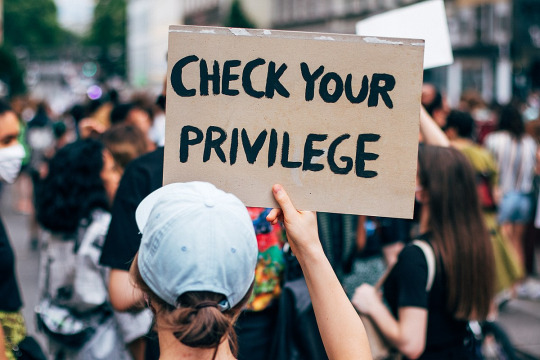
Close-up of a 'Check Your Privilege' sign at a Black Lives Matter rally in Austria. Photo by Ivan Radic, licensed under CC BY 2.0.
Privilege is an important topic to discuss, even though many people may avoid it due to discomfort. It influences nearly every aspect of our lives, whether we recognize it or not, and nature interpretation is no exception. Privilege can be defined as an unearned advantage granted to specific individuals or groups, often at the expense of others who do not fit societal “norms.” Privilege manifests in many forms, including race, ethnicity, gender identity, sexual orientation, mental and physical abilities, socioeconomic status, nationality, and religion, among others. In nature interpretation, privilege often determines a person’s ability to access and engage with nature without facing barriers. These barriers can be economic, cultural, linguistic, or related to physical or cognitive accessibility (Beck et al., 2018).
For instance, individuals who do not speak English fluently—or at all—may struggle to understand many interpretive resources, which are often exclusively in English. To address this, interpreters can offer translations into commonly spoken languages in their region, ensuring broader inclusivity. Financial status is another significant barrier, as enjoying nature can involve costs for travel, entry fees to parks, specialized equipment, and even interpreter services (Beck et al., 2018). Additionally, some people may not have the luxury of taking time off work to regularly spend time in nature, a privilege that many of us take for granted.
To combat these barriers, interpreters can explore affordable and accessible alternatives. Nature interpretation does not need to be confined to in-person experiences—it can extend to blogs, podcasts, videos, and infographics. These digital platforms are especially beneficial for those who lack the resources or physical ability to participate in activities like hiking through muddy trails or canoeing on rivers. For greater inclusivity, interpreters should ensure online resources include captions, image descriptions, and transcripts. During in-person events, providing sign language interpreters and accessible facilities can further reduce barriers.
Representation is another crucial aspect. Some individuals may feel unwelcome in natural spaces due to a lack of visible diversity or inclusivity in staff and programming (Beck et al., 2018). A diverse, welcoming, and well-trained staff can help underrepresented groups feel more comfortable and engaged in natural settings.
As nature interpreters, it’s vital to acknowledge our own privileges and consider how they shape our perspectives and approaches. Many issues connected to nature interpretation, such as climate change, disproportionately affect marginalized communities (Berberian et al., 2022). Discussions around climate justice must incorporate the intersections of race, gender, nationality, and other social factors to ensure they are inclusive and equitable. Recognizing and addressing privilege allows interpreters to create experiences that are not only educational but also accessible and meaningful for all.

Protesters at a climate change demonstration holding a sign reading 'Climate change = social justice.' Image by Fred Murphy, licensed under CC BY-ND-NC 1.0.
Beck, L., Cable, T. T., & Knudson, D. M. (2018). Interpreting cultural and natural heritage for a better world. Sagamore Publishing.
Berberian, A. G., Gonzalez, D. J. X., & Cushing, L. J. (2022). Racial Disparities in Climate Change-Related Health Effects in the United States. Current environmental health reports, 9(3), 451–464. https://doi.org/10.1007/s40572-022-00360-w
8 notes
·
View notes
Text
Blog Post #2
Question 1: How should online spaces be arranged to promote gender equality?
Online spaces should be intended to promote gender equality by making sure that it includes inclusivity, safety, and representation. Platforms should enforce strict policies against harassment, hate speech, and discrimination while deepening diverse voices. Transparent algorithms should prevent biases that disempower certain groups. Tech companies should prioritize gender diversity in leadership and make teams to create more equitable digital experiences. Also, usable digital literacy programs can empower users of all genders to navigate and shape online spaces. A culture of respect and accountability, supported by guidelines and user-driven moderation, can help create a more equal and inclusive internet for everyone.
Question 2: What moral principles should guide online feminist activism?
Online feminist activism should be guided by principles of inclusivity, respect, equality and justice. It should increase minimized voices, promote connection, and challenge discrimination without resorting to harm. Honesty and accountability are key moral principles as well. The activists should fact-check their information and acknowledge their mistakes. Empathy and solidarity should form discussions, promoting constructive communication rather than division. Privacy and consent should be respected, especially when sharing personal stories or photos. Lastly, persistence and adaptability are important, ensuring activism remains effective in the forever-changing online landscape. By following these principles, online feminist activism can continue to create meaningful change while maintaining ethical integrity.
Question 3: How can our own biases and privileges influence the way we understand and participate with social issues?
Our biases and privileges shape how we see and engage with social issues. They influence what problems we notice, whose voices we trust, and how we understand experiences different from our own. Privilege can make it easy to overlook struggles that don’t affect us directly, while our bias can lead us to defend unjust systems. Recognizing these influences helps us listen, learn, and act more understanding to the other people who may be struggling. By staying open minded and understanding to different perspectives, questioning our own assumptions, and using our own privilege to support others, we can deal with social issues in a more informed and responsible way.
Question 4: How do systemic structures, such as racism, shape individual experiences?
Racism affects people’s daily lives by creating unfair advantages for some and barriers for others. It can impact jobs, education, healthcare, and even how people are treated in public. For example, some may face racism when applying for a job or being treated unfairly by the police. These patterns aren’t just personal, they have been built into laws and systems that have been going on for a long time. Over time, this shapes how people see themselves and their opportunities. Recognizing these issues helps us understand each others experiences and work toward a more equal society where everyone has the same chances.
5 notes
·
View notes
Text
Today, our information feeds and social media are largely governed by algorithms optimized to maximize engagement, often amplifying the most inflammatory content. With every view, like, and share analyzed to predict and steer our behaviors, we risk becoming subjects of surveillance and manipulation rather than active participants in civic discourse.
In 2025, we will start laying the groundwork for more empathetic and inclusive social networks, with the adoption of what I call “prosocial media.” This is media that doesn't just capture the attention of users but catalyzes mutual understanding between them. Media that empowers every voice, while fostering the capacity to listen across differences. Media that enables citizens to positively shape the digital public sphere.
One crucial aspect of prosocial media is the ability to allow people to collaboratively add context to potentially misleading information, thereby fostering a more informed discourse. Initiatives like Community Notes on X.com (formerly Twitter) and YouTube, for example, have successfully implemented this for public posts. A recent study, for instance, showed that Twitter Community Notes is an effective tool, reducing the number of retweets of potentially misleading posts by almost half and increasing the probability that a tweet is deleted by the user by 80 percent.
In Taiwan, Cofacts, a community-sourced fact-checking platform, is taking this concept further by empowering citizens to contextualize messages within private groups as well. Launched in 2017 by the civic technology community g0v, the platform was successfully adopted in Thailand in 2019. Research by Cornell University found that Cofacts managed to be quicker and as accurate in dealing with misinformation queries as professional fact-checking sites.
Prosocial media also addresses the centralization of social media platforms and the resulting unhealthy concentration of curation power in the hands of a few tech giants. It does this by using decentralized social networking protocols which enable content to flow seamlessly between different social media platforms. Last year, for instance, Meta’s Threads joined the Fediverse, a group of social media platforms that can communicate with one another, including Mastodon and Wordpress. This will eventually allow users on Threads to follow accounts and publish posts on other social networks. In February 2024, another decentralized platform, Bluesky (funded by Twitter founder Jack Dorsey) was also launched to the public.
Decentralization holds the promise of a more democratic internet, where people have greater control over their data and online experiences, leading to a proliferation of local communities, all interconnected through open protocols. This is increasingly valued by users. For instance, research at the University of Cincinnati found that users on decentralized social networks like Mastodon have joined primarily because they could control their information from data mining.
Breaking free of this attention economy will also require bold innovations in the very design of our digital platforms. In 2025, we will start doing that by using AI systems to help us prioritize content that promotes understanding and bridges divides, creating digital spaces that foster genuine dialogue rather than conflict. For instance, Stanford University and Jigsaw, the team created by Google to address global security problems and threats to open societies, have created AI tools that score social media posts and comments based on values like compassion, respect, and curiosity. In April 2024, they published research that demonstrated that ranking posts and comments based on such values significantly reduces reported animosity among users.
In 2025, a new wave of prosocial media platforms will finally start bridging the online divides, highlighting instead the common ground that unites us.
9 notes
·
View notes
Text
The Rise of Crypto Trading in India’s Heartland

India’s Heartland Joins the Crypto Revolution! 🌍
Once dominated by agriculture, India’s Tier 2 and Tier 3 cities are now embracing a digital transformation—crypto trading is booming! With rising internet access, smartphone adoption, and digital literacy, individuals from smaller cities are seizing global financial opportunities like never before.
But this is more than just a trend—it’s a movement reshaping India’s financial landscape. At the forefront are blockchain pioneers and educators, like Rovinder Singh, India’s leading blockchain expert and trading influencer, empowering the next generation of crypto enthusiasts.
From villages to vibrant crypto hubs, India’s financial future is being redefined. Are you ready to be part of it? 🚀🔥
Understanding the Growth of Crypto Trading in India
India’s journey into the crypto world has been a dynamic one. From skepticism to regulatory challenges and now widespread adoption, the country has come a long way. The heartlands, often overshadowed by metro cities, are now stepping into the limelight as significant contributors to this growth. But what fuels this interest?
Accessibility to Knowledge and Education
The rise of trading educators like Rovinder Singh has played a pivotal role in making crypto trading accessible to the masses. Rovinder, recognized as a leading blockchain influencer, has dedicated his efforts to educating aspiring traders and enthusiasts about the intricacies of blockchain and cryptocurrency. His emphasis on simplifying complex concepts has empowered individuals to venture into the world of digital assets confidently.
Technological Advancements and Mobile Penetration
The widespread availability of affordable smartphones and internet connectivity in rural and semi-urban areas has significantly contributed to the adoption of crypto trading. Platforms like “Finsai” and “MFEV", offering seamless trading experiences and user-friendly interfaces, are now reaching areas where financial literacy was once a challenge.
Youthful Enthusiasm
India’s youth are at the forefront of this revolution. With a hunger for financial independence and a keen interest in technology, they’re turning to crypto trading as an avenue for wealth creation. Influencers like Rovinder Blockchain Activist inspire them by highlighting the potential of blockchain to transform traditional financial systems.
Blockchain’s Role in India’s Heartland
Blockchain, the underlying technology behind cryptocurrencies, is much more than a financial tool. It’s a mechanism for transparency, decentralization, and empowerment. The adoption of blockchain in India’s heartland is evident in various sectors, from agriculture to education.
Enhancing Financial Inclusion
For years, financial services have been a luxury for many in rural India. Blockchain technology is changing that narrative. By offering decentralized and secure platforms, it provides opportunities for unbanked populations to access financial tools.
Educational Empowerment
Through platforms dedicated to blockchain education, trading influencers like Rovinder Blockchain Educator are creating awareness and opportunities. By integrating blockchain into educational frameworks, these initiatives are equipping individuals with the skills needed to thrive in the digital economy.
The Challenges of Crypto Trading in India
While the rise of crypto trading in India’s heartland is commendable, it’s not without challenges. Regulatory uncertainties, lack of awareness, and the prevalence of scams are significant hurdles.
Regulatory Landscape
India’s regulatory environment for cryptocurrencies has been evolving. While the government has shown interest in blockchain technology, cryptocurrencies often face scrutiny. Trading educators like Rovinder emphasize the importance of adhering to regulations and making informed decisions to navigate this uncertain terrain.
Combatting Scams
Scams and fraudulent schemes pose a threat to the credibility of the crypto industry. Influencers and educators must work together to spread awareness about identifying legitimate opportunities and avoiding pitfalls.
Bridging the Knowledge Gap
Although platforms like Rovinder’s initiatives are making strides, there’s still a long way to go in bridging the knowledge gap. Consistent efforts in education and awareness campaigns are crucial.
Opportunities for India’s Crypto Revolution
Despite challenges, the opportunities for crypto trading and blockchain adoption in India’s heartland are immense. The growing interest, coupled with support from blockchain influencers, is paving the way for a brighter future.
Wealth Creation for Individuals
Crypto trading offers a lucrative opportunity for individuals to grow their wealth. The accessibility of trading platforms and the guidance of experts like Rovinder Blockchain Educator ensure that even newcomers can achieve success.
Decentralized Finance (DeFi)
DeFi applications are opening doors for decentralized lending, borrowing, and saving. These innovations have the potential to revolutionize traditional banking systems and provide financial autonomy to underserved populations.
Job Creation
The blockchain and cryptocurrency sector is creating job opportunities in fields like technology, marketing, content creation, and education. Trading influencers and educators are actively contributing to this ecosystem by mentoring and guiding aspiring professionals.
Rovinder Singh: A Visionary Leader
Rovinder Singh’s contributions to the blockchain and crypto ecosystem in India are invaluable. Known as a blockchain activist, he combines his expertise as a trading educator and his vision as a crypto and forex trader to inspire countless individuals.
Pioneering Blockchain Education
As the best blockchain educator in India, Rovinder’s initiatives focus on making blockchain knowledge accessible and practical. By offering comprehensive training programs, he’s helping individuals understand the transformative power of blockchain.
Promoting Ethical Trading Practices
Rovinder’s influence extends beyond education. As a trading influencer, he advocates for ethical trading practices, ensuring that traders prioritize transparency and integrity.
The Road Ahead for Crypto in India’s Heartland
The rise of crypto trading in India’s heartland is a testament to the country’s adaptability and resilience. With the support of blockchain educators, influencers, and activists like Rovinder Singh, this movement is poised to create a lasting impact.
India’s heartland is no longer on the periphery of technological advancements. Instead, it’s emerging as a hub for innovation and opportunity. As crypto trading and blockchain technology continue to grow, the vision of a financially inclusive and empowered India is becoming a reality. By fostering education, awareness, and ethical practices, this revolution will leave an indelible mark on the nation’s future.
4 notes
·
View notes
Text
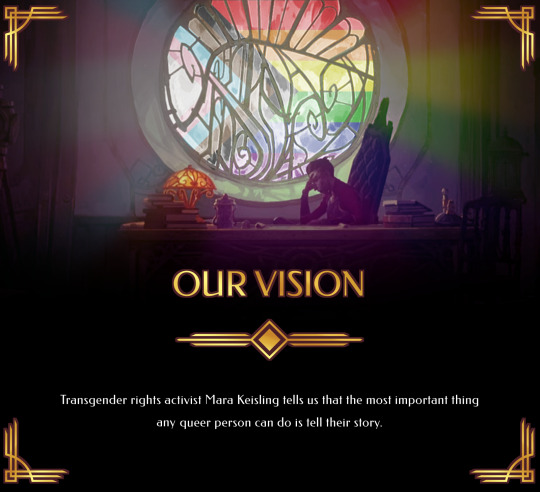
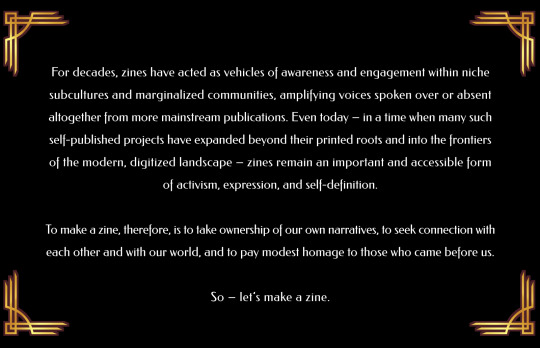


[Image ID: a set of 4 images, all with a black background and golden art deco graphics in the four corners. The first one features an altered screenshot from Arcane - Silco sitting in his office with his profile to the camera. Behind him is the large circular window. An inclusive LGBTQ flag is superimposed behind the window and colourful rays of the rainbow spread over the image in low opacity. Golden text in an art deco font reads: OUR VISION. The rest of the images feature white art deco font text that read the text featured in full below. The last image features the SILCO QUEER ZINE logo in gold and rainbow colours and art deco font on the bottom centre. /end if ID]
FULL TEXT:
OUR VISION
Transgender rights activist Mara Keisling tells us that the most important thing any queer person can do is tell their story.
For decades, zines have acted as vehicles of awareness and engagement within niche subcultures and marginalized communities, amplifying voices spoken over or absent altogether from more mainstream publications. Even today – in a time when many such self-published projects have expanded beyond their printed roots and into the frontiers of the modern, digitized landscape – zines remain an important and accessible form of activism, expression, and self-definition.
To make a zine, therefore, is to take ownership of our own narratives, to seek connection with each other and with our world, and to pay modest homage to those who came before us.
So – let’s make a zine.
This month, we are opening applications for contributors to the maiden voyage of the Queer Silco Zine; and would like to invite the Arcane fan community to join us at the figurative table. Together, we aim to create a feast of unabashed queer existence, using the character of Silco as the lens of our collective thematic focus.
The goal of this project is not to limit or rigidly define the meaning of the term 'queer'; nor will we profess, or even foolishly aim, to document every possible nuance nested beneath the broad umbrella of queer identities and experiences. Rather, the Queer Silco Zine is a passion project by and for queers – as well as by and for the people who love us – simply to share our space, tell our stories, and pay tribute to the vibrance and variety of our queer lives. While we can’t hope to portray every facet of our community’s collective experiences, we hope at least that others will see pieces of themselves reflected in the finished zine’s pages.
We hope too that that will be as valuable to them as it is to us.
Silence is death; and to exist proudly is to resist loudly. We believe that, in sharing community, we persevere and thrive -- brothers and sisters (and siblings) back to back against everything the world throws at us.
#arcane#silco#silco arcane#silco fanart#silco fanfic#silco league of legends#lgbtq#lesbian#gay#bisexual#trans#queer#aromantic#asexual#nonbinary#zine
77 notes
·
View notes